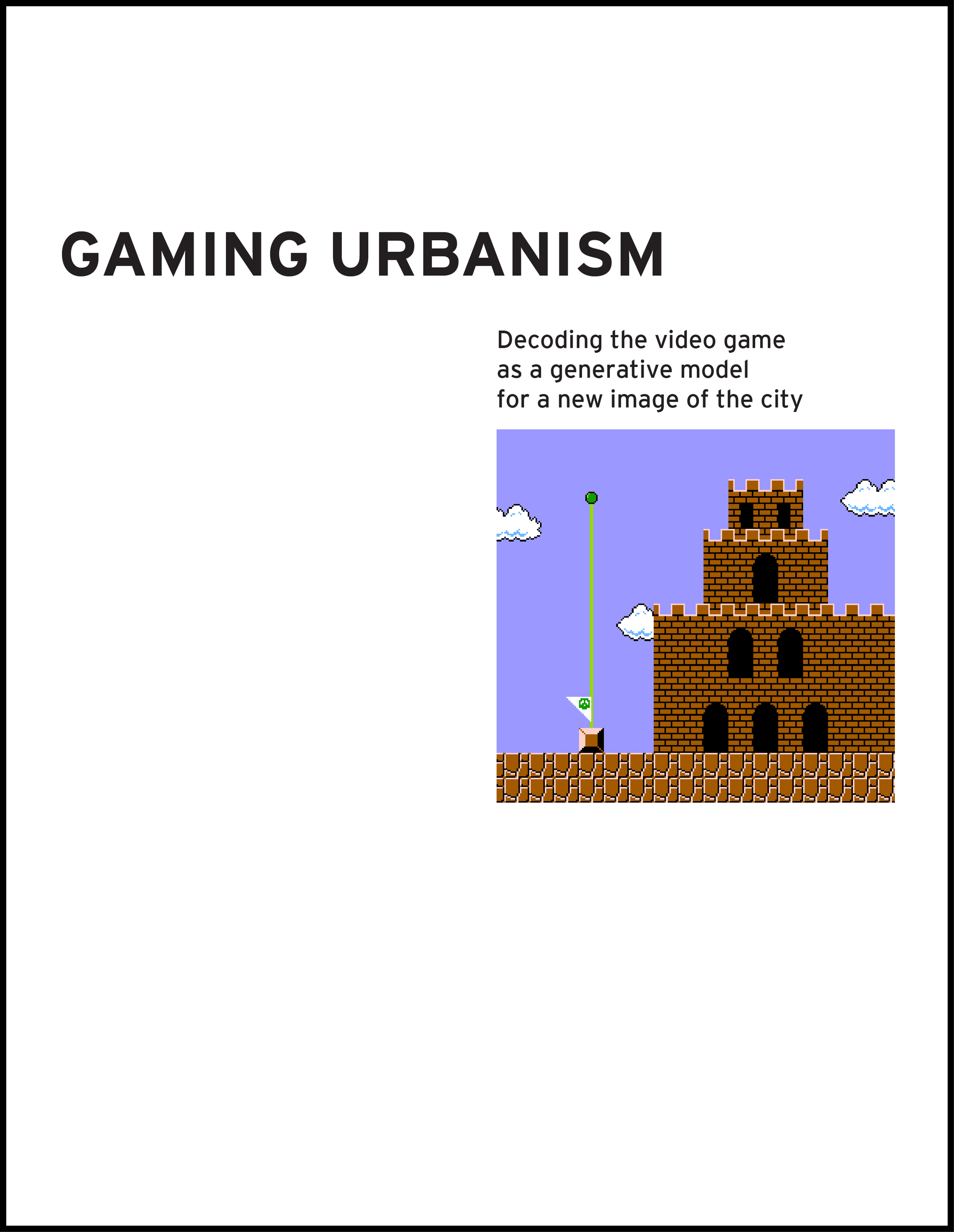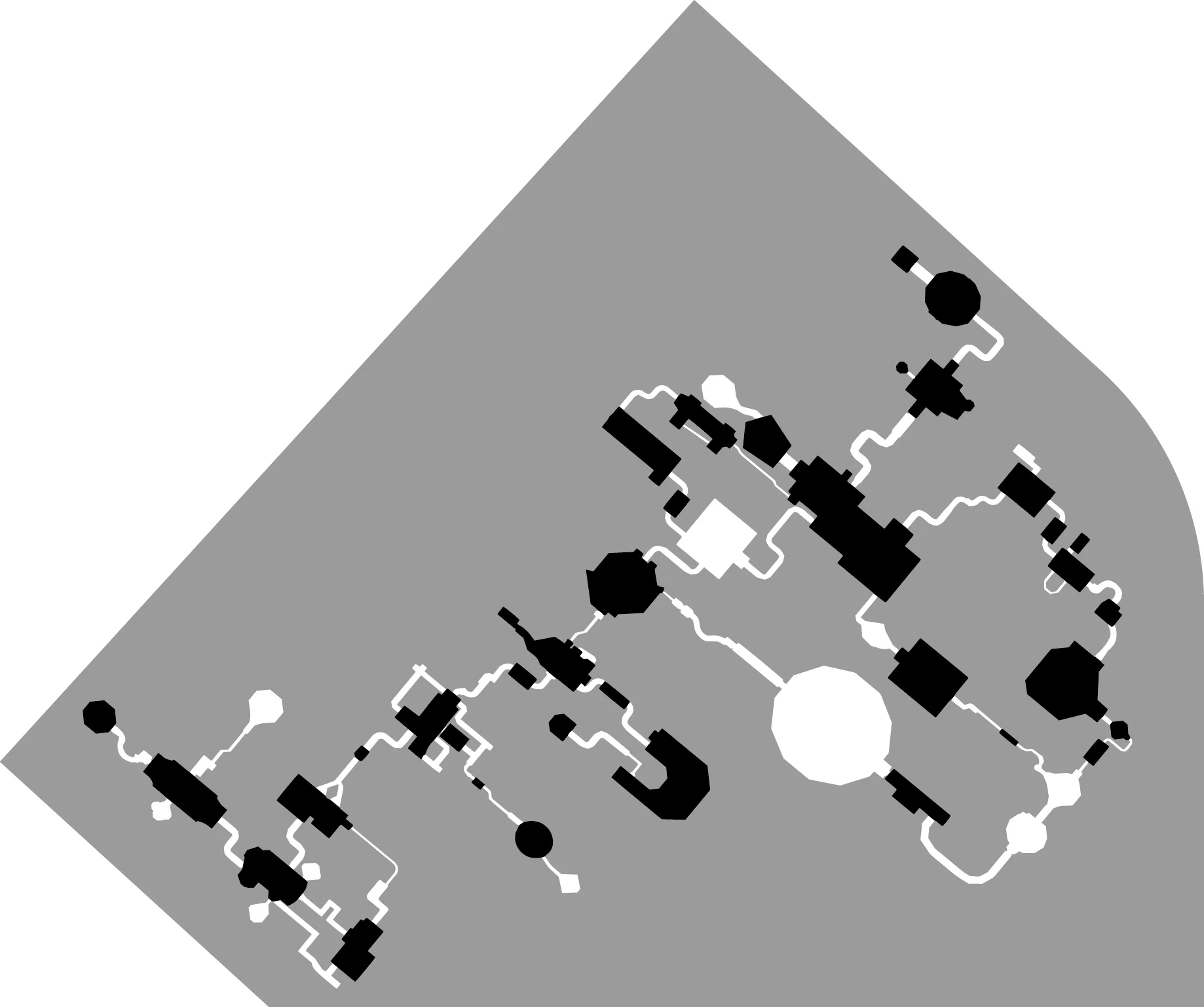Gaming Urbanism:
Decoding the video game as a generative model for a new image of the city
Game designers utilize the urban landscape as the milieu from which they draw their inspirations, helping to reinforce the realities they fabricate in their digital narratives. Here, the urban mimesis spawned from game designer’s imaginations speak back to the urban environment, thus feeding back to recodify the urban fabric. Ultimately, the game reality and the urban reality enter a dialogue through which the urban environment can develop.
First-person, single-player video games follow an experiential model for environment design, one which is centered around creating the most stimulating, dramatic, unique, lucid and memorable physical environments from the point-of-view of the player. This creates environments at a human-scale, and avoids the pratfalls of overly formal, plan-based designs common in urbanism. The experiential model of design instead generates maps of incredibly dynamic and varied spaces.
Decoding video game design theory creates an argument for an updated set of narrative and spatial elements that make up the image of the city, expanding upon Kevin Lynch's five original elements (path, edge, district, node, and landmark). These elements are as follows: playable character, non-playable character, choreographed path, tutorial/orientation, checkpoint, super-goal, timeline, non-linear path, gimmick, difficulty, hyper-world, district, level/area, quest, obstacle, edge, landmark, event, community, place, presence, and score.
The definitions of these elements and their applications to urban design are presented in the publication. This research was used to decode Boston as a city of narratives, which was then applied to the design of an Olympic Village for Boston in 2024.
Using video game maps as a generator of urban form: the map of Metroid Prime as figure-ground Nolli plan.
Non-spatial networked character narratives map for a Boston Olympic Village.
Full paper available upon request.
(In partnership with Tyler Pertman and Mahdi Sabbagh.)
(Research publication: booklet, 144 pages. Yale School of Architecture, M.Arch. Spring urban design studio 2014. Critic: Bimal Mendis.)



